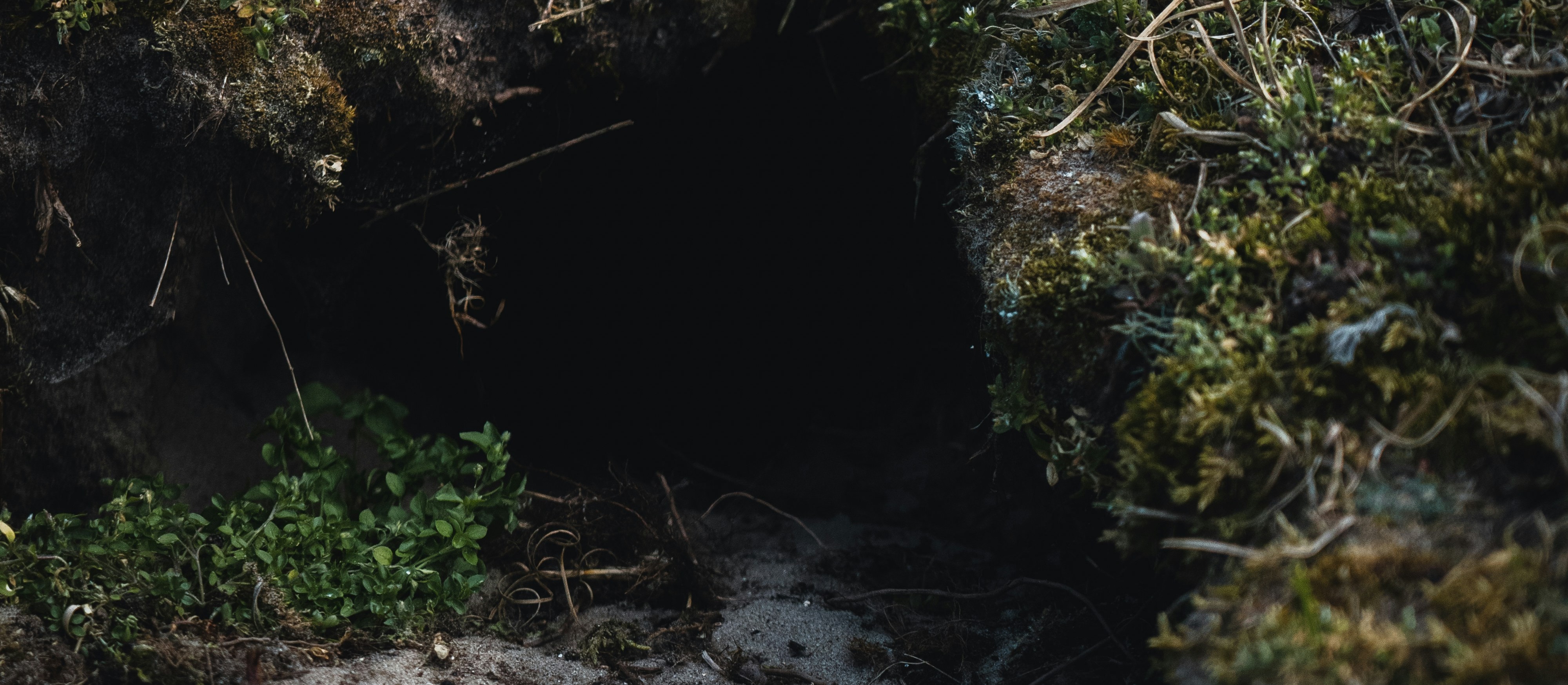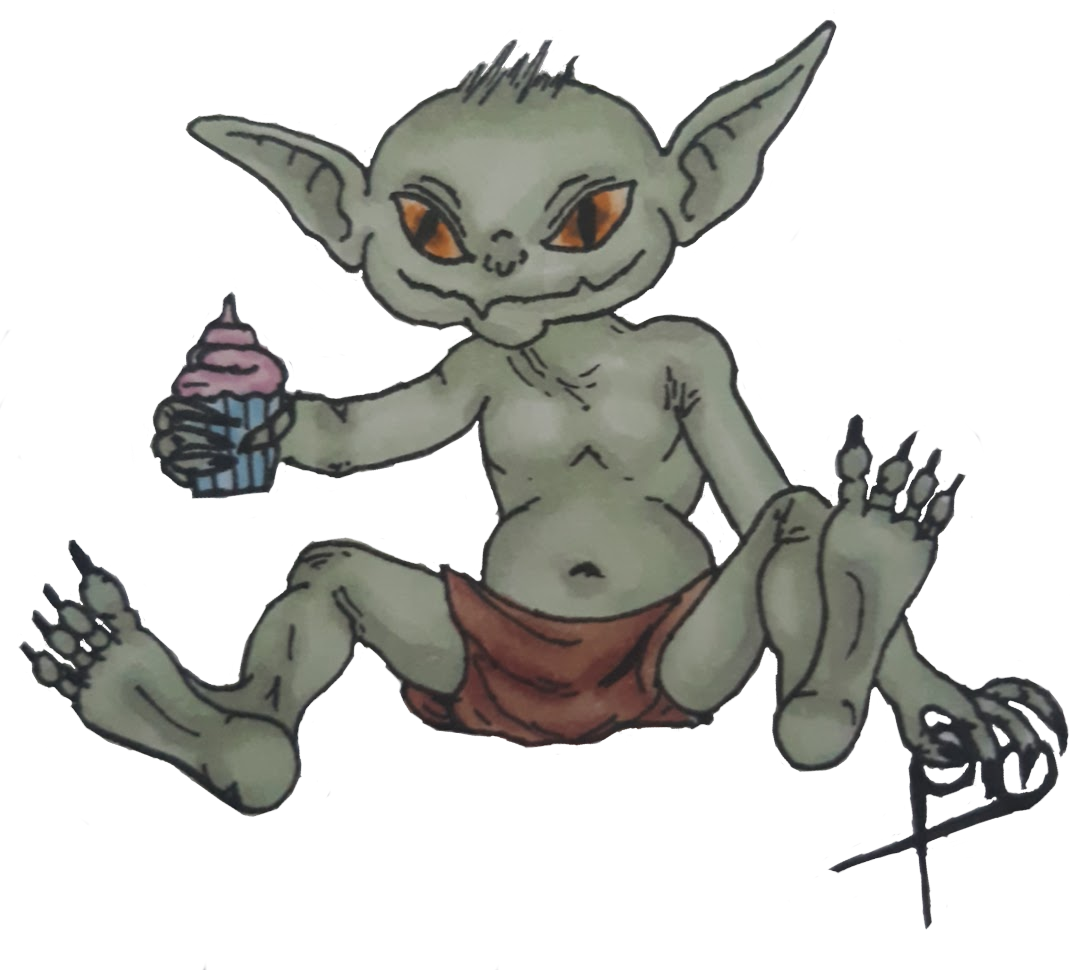Goblin
Goblins are the most common and annoying pest in the entirety of Estara. These small creatures will steal anything and everything available without any obvious pattern. They seem to pride themselves on causing the most annoyance and trouble for their victims, hence the collective noun of an annoyance of goblins. Ultimately, goblins are scavengers, choosing to take their food instead of finding it themselves.
Appearance & Subtypes
As creatures adept at surviving, goblins come in a range of colours depending on where they live;
City Goblin
I swear on my gran’s grave, I turned my back for one blink—one!—and the raspberry tarts were gone. Just crumbs... and the smell of wet stone
City goblins tend to have a more grayish skin colour to blend in with the surrounding concrete and stone. They are also smaller due to the need to be able to sneak into houses through small cracks, having long spindly fingers perfect for picking locks. These goblins have developed a taste for sweet treats, with many sweet shops and bakeries requiring extra security to prevent any unwelcome guests.
Forest Goblin
I woke up to chewing. Thought it was the fire crackling. Then I saw Bren's leg... and the thing still gnawing on it
On the other hand, forest goblins are larger, with sharp teeth to rip apart and eat any abandoned kills they find. Their mottled green skin provides the ultimate disguise in the dark forest of Thaele. Being the most aggressive of the goblin family, they are one of the only goblins that are potentially dangerous to people, as their taste for red meat has caused many expeditions into the forest to end in bloodshed. This is due to them mistaking sleeping people for abandoned kills, ripping them apart before anyone can scream. Luckily, unlike the other goblins, they are highly territorial, and it would be abnormal to encounter more than one at a time.
Grass Goblin
My boots were filled with jam. My horse was untied. And I swear—swear—I heard giggling in the grass as I tripped over my own damn pack
The most common type of goblin is a grass goblin (sometimes known as the common goblin). They hide among the grasses and trees, stealing supplies from unsuspecting travellers while they sleep. It is usual for them to travel in families, sneaking into camps at night and taking everything they can. Some people have even found themselves stripped bare by the morning. As with all of their species, grass goblins have a fondness for tricks, however they are one of the most enthusiastic about it. They will set up lots of little traps for the victims when they wake up, often staying to watch the chaos unfold.
Rock Goblin
I barely saw them—just heard scraping nearby. Their sharp ears caught every sound, and before I knew it, my gear was gone
A close relative to the city goblins, cave or rock goblins have similar greyish skin, however, due to spending most of their life underground, it is paler from a lack of sunlight. Their eyes are also a greyish white, giving them poor eyesight and a sensitivity to light. To make up for this defect, cave goblins have highly sensitive hearing, being able to pinpoint sounds from 2 miles away, a product of their large ears. Given the lack of food in deep caves, rock goblins sometimes have to venture up to the surface at night, stealing eggs from nesting birds or even from mountaineers taking a rest on the rocks.
Swamp Goblin
Those swamp goblins are slipperier than a wet eel. Just when I think I’ve got a good catch, they’re under the water, snatching it right from my hands—and leaving my nets tangled like a mess of weeds
Finally, the most unusual of the goblin family is the swamp goblin, preferring to remain in water than on land. This means they eventually evolved gills and webbed appendages to survive under the surface for extended periods of time. Their eyes are also larger, providing them greater vision in the murky water. While most swamp goblins live in the Vyshaal swamp, a few have found their way into various lakes and rivers around the continent. They provide a daily annoyance to fishermen, always stealing their catches and bait, leaving tangled messes of rope and wire behind.
Habitat
Preferring to live in dark and damp environments, goblins live in what they call a slinkden. It is usually a hole in the ground full of dead leaves and moss, providing the perfect growing space for fungi and mould, which is one of the most important parts of a goblin's diet. As with everything the goblins own, their slinkdens are usually old burrows or dens, abandoned by the original owners. Occasionally, they might take up residence in a natural hole if they can't find anywhere else, but will always prefer a second hand home. City goblins may find themselves a cozy waste pile, while swamp goblins prefer to live in half-underwater caves.
A Stealing Nature
A goblin will eat whatever they can get their hands on, however, they are not equipped to hunt or forage for themselves, choosing to steal from animals that will do it for them. This symbiotic nature possibly evolved from goblins not knowing what was safe or dangerous to eat, leading them to have to rely of other animals to show them. Aside from food, goblins may also steal curious objects that pique their interest, especially if they have seen them being used frequently. Each goblin will have its own favourite items to steal and add to their personal hoard, either kept in the main slinkden or in a private collection hidden elsewhere. Their favourite victims are mages as they always have plenty of interesting and delicious food and items.
Reproducion
Goblins usually have around 12 babies at once, with some even being noted to have as many as 20. However, goblins are notoriously hard to catch so this figure can't be officially verified. It must also be noted that goblin families are very blended and multiple births may happen at once, causing the true number per birth to be unknown. For the first 2 weeks, it is common for a goblin family to employ a nanny to watch over the babies. This usually consists of the babies being dropped off in a nest or burrow of another species that has just given birth, leaving them to foster the babies until they are old enough. For this reason, goblin young are very ambiguous with their looks, being indistinguishable for most baby animals at a distance. They also employ a certain tactic called scent-mimicry, where they take on the scent of the foster mother's biological children in order to be accepted. After the 2 weeks, the goblins are old enough to start to climb out of the nest and make their way back to their true family. At this time, the mother goblin with begin to emit a pheromone calling her children home. This process does have its risks, and not all of the young will make it back to the slinkden to eventually become true goblins.
Goblin Prevention
- Carry a Goblin Repellent if going on a long walk
- Secure all doors and windows every night
- Lock away all valuables
- Ensure there are no gaps that a goblin could enter the building
- Leave a gift for the goblins every night
- Burn incense to ward away any goblins
- Surround your camp with a circle of vinegar
Please note that these methods are not fully goblin proof and will not have a 100% success rate. The author of this book is not liable for any unfortunate mishaps due to or in spite of these tips. Use at your own risk.




Comments